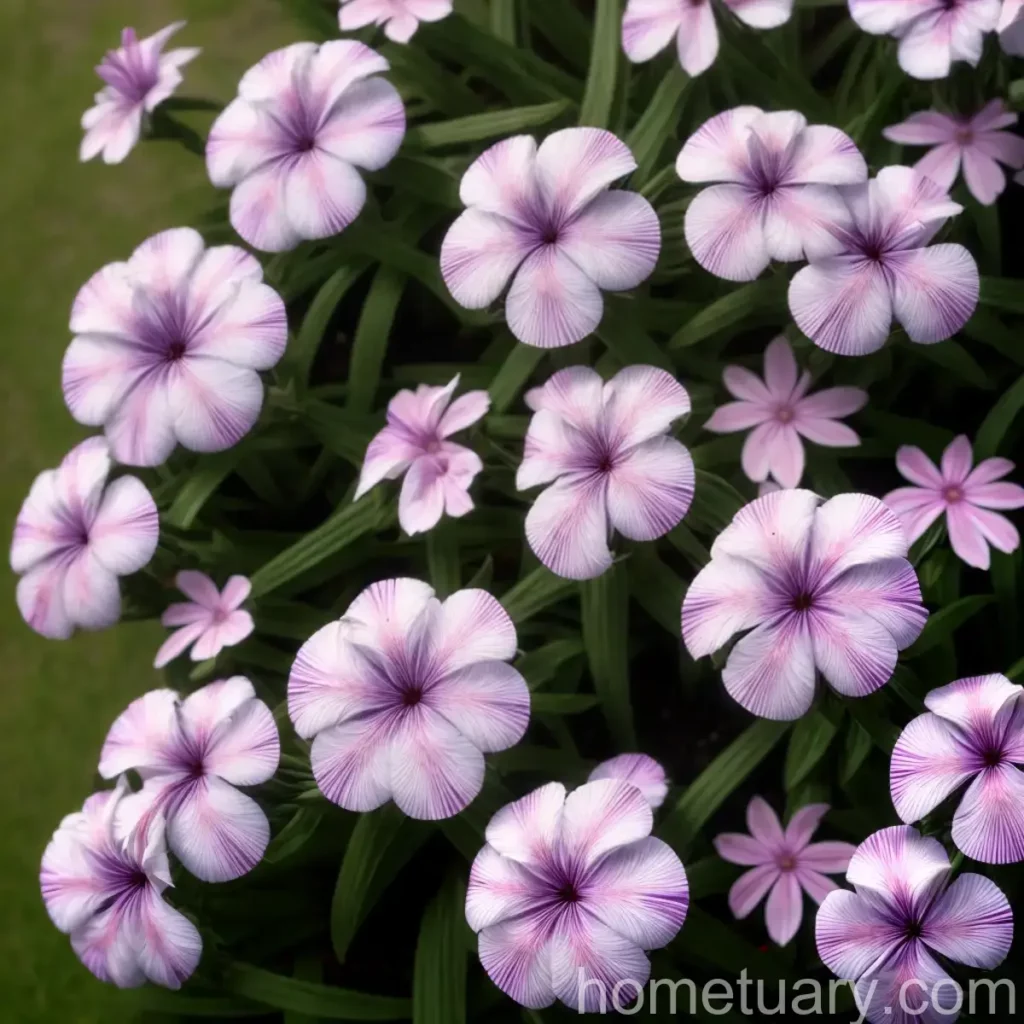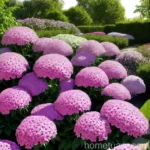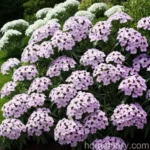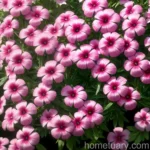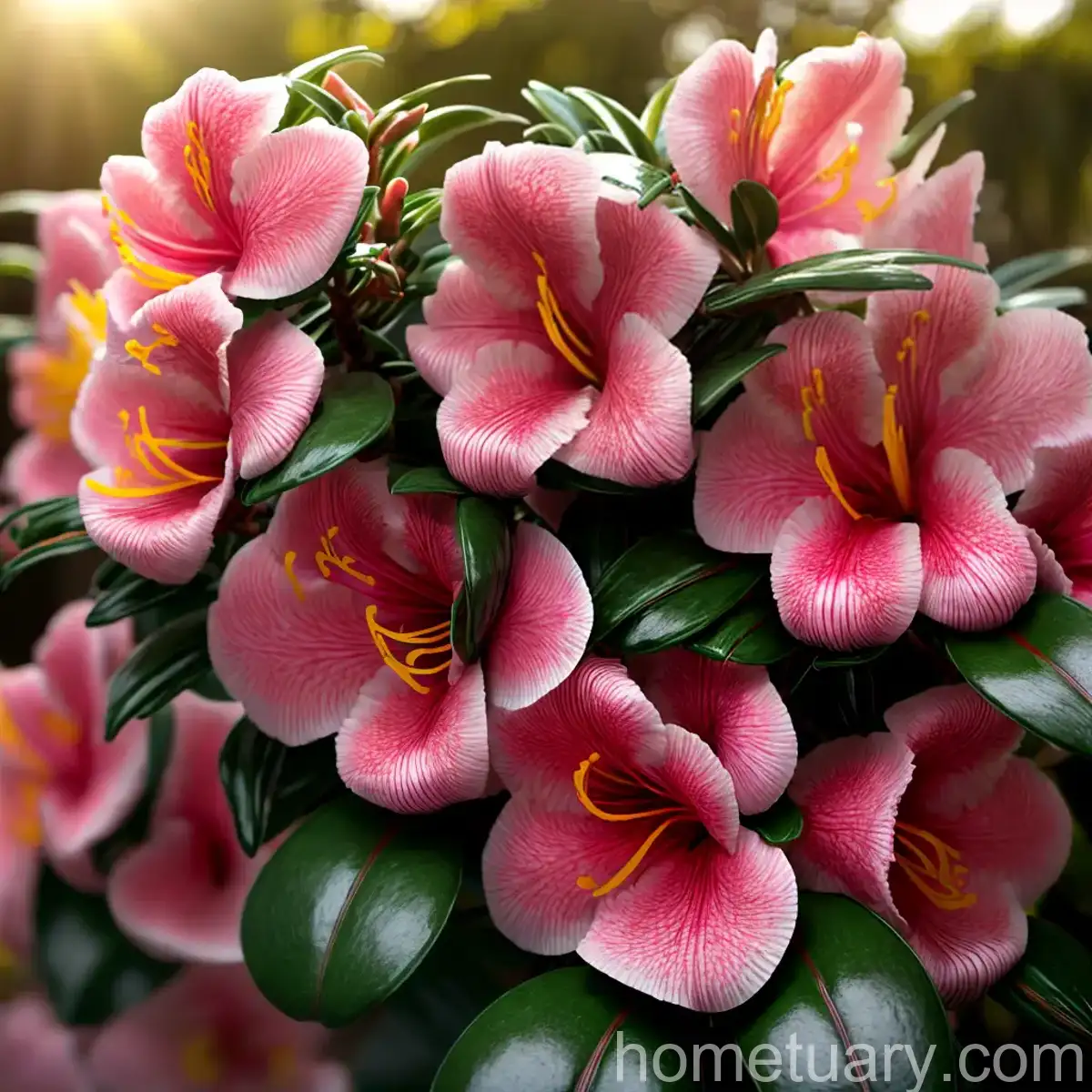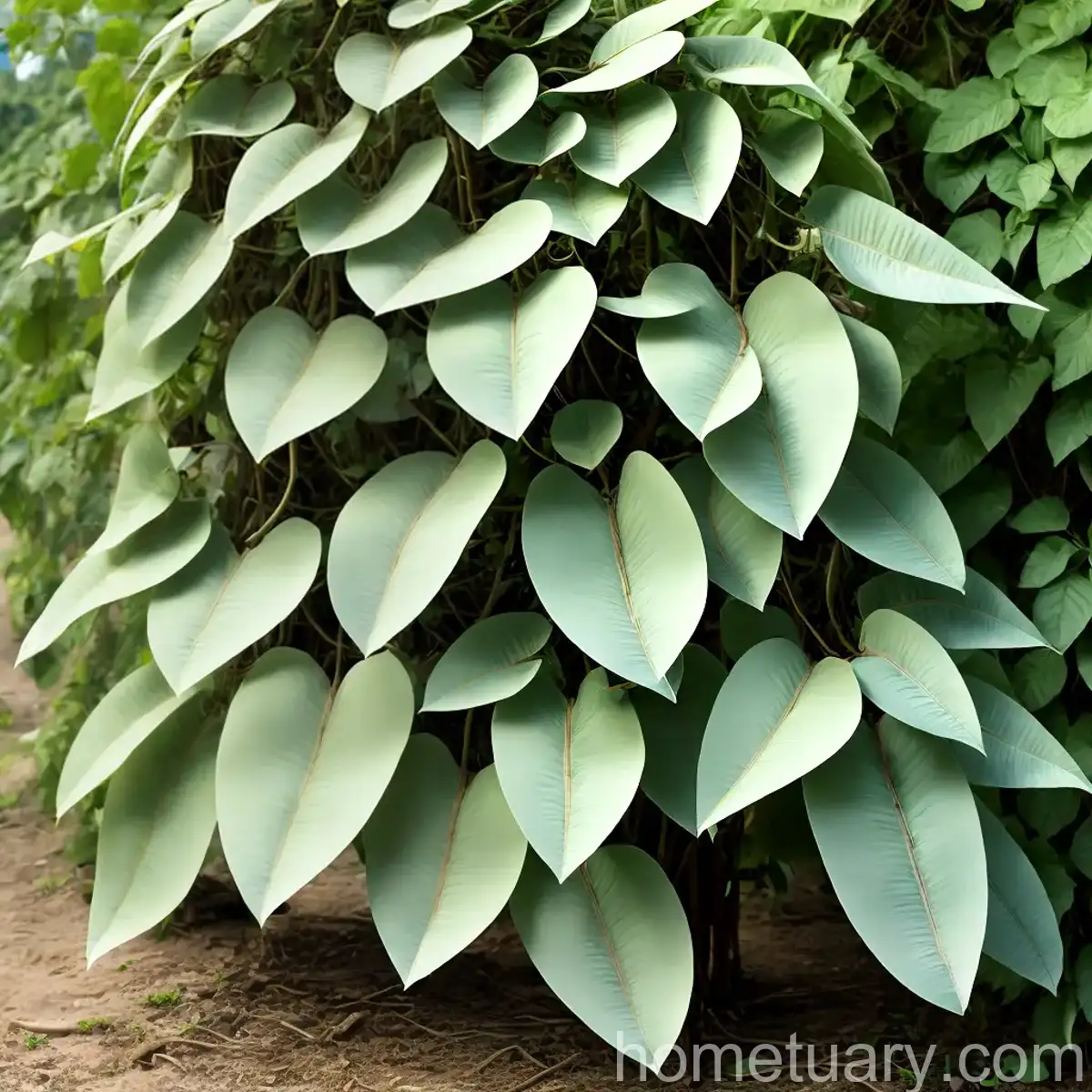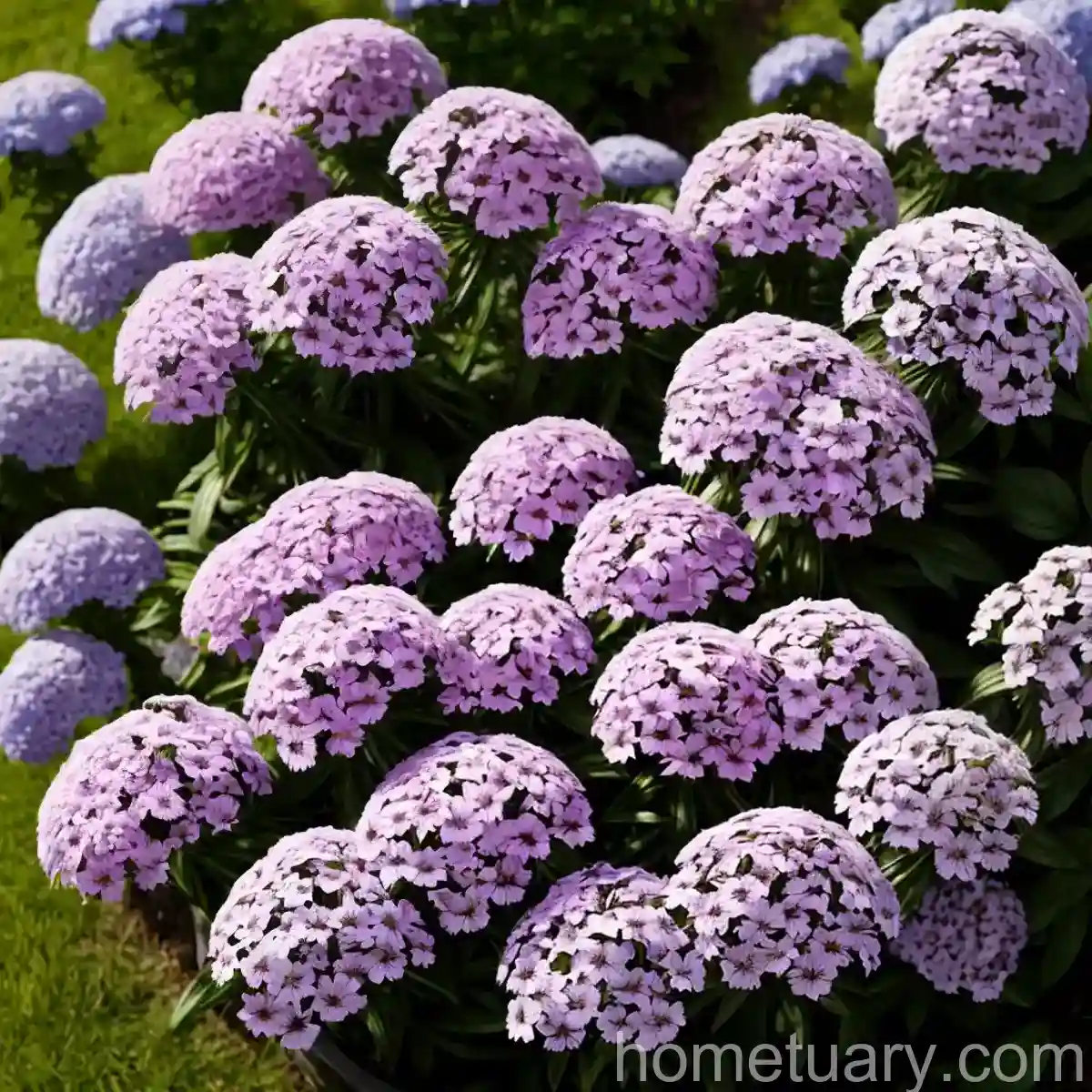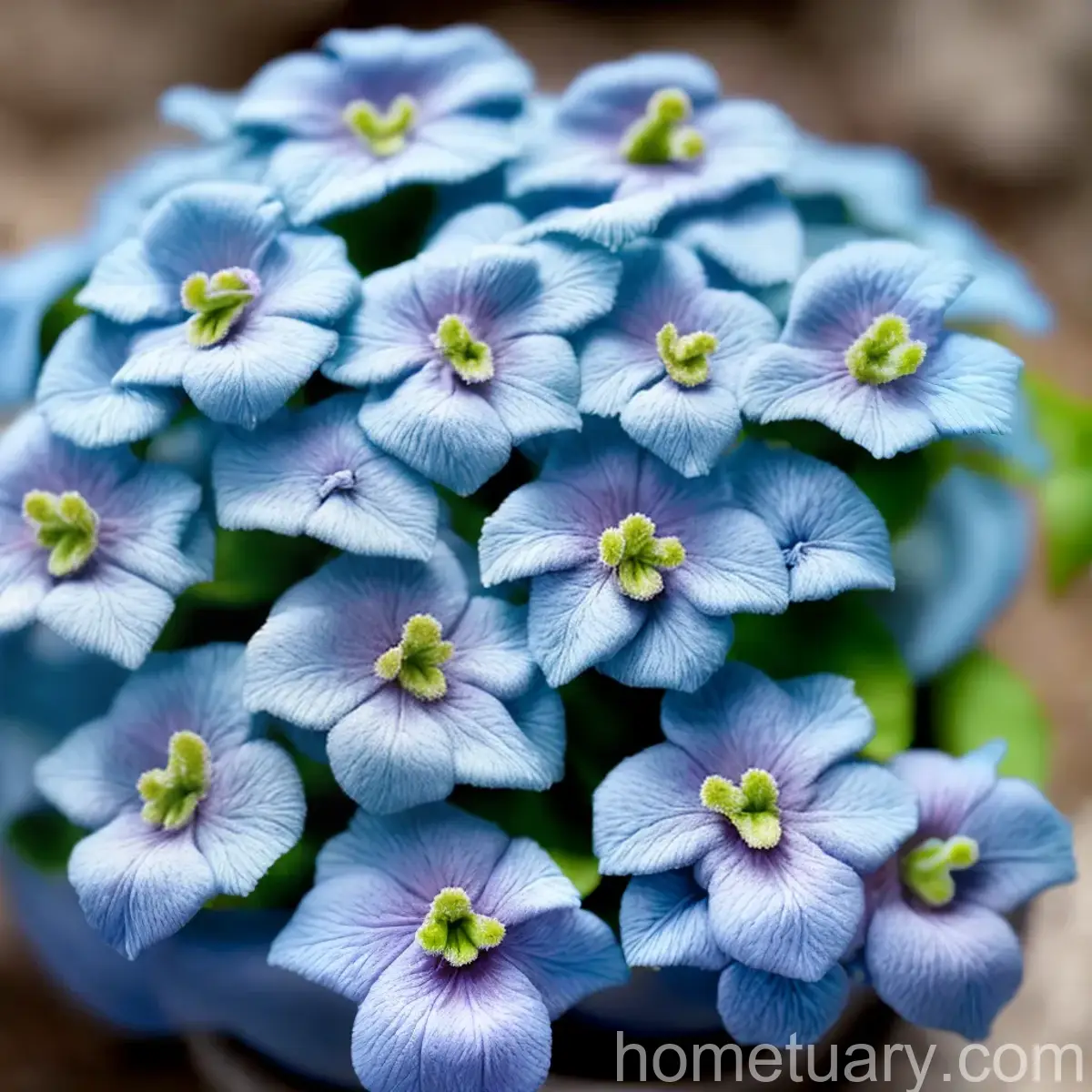Phlox (Phlox x arendsii ‘Ping Pong’): A Complete Guide
Phlox is a genus of flowering plants in the family Polemoniaceae, comprising over 67 species, and many cultivated varieties. It is a popular choice for gardeners due to its beautiful, fragrant flowers and its ability to attract pollinators such as butterflies and hummingbirds. In this comprehensive guide, we will focus on a specific cultivar called Phlox x arendsii ‘Ping Pong’, exploring its characteristics, cultivation requirements, care tips, and much more.
What is Phlox x arendsii ‘Ping Pong’?
Phlox x arendsii ‘Ping Pong’ is a cultivar of the Phlox x arendsii species, renowned for its striking, white flowers that resemble the appearance of ping pong balls, hence the name. This perennial plant is cherished for its abundant clusters of fragrant blossoms that emerge in late spring to early summer, adding a touch of elegance to any garden or landscape.
Key Takeaways
To provide a structured approach to our discussion, we will delve into numerous aspects of growing and caring for Phlox x arendsii ‘Ping Pong’, covering topics such as its cultural requirements, maintenance, diseases and pests, propagation, and much more. Our exploration will aim to provide comprehensive insights into every facet of cultivating this delightful flowering plant. Let’s delve into the world of Phlox x arendsii ‘Ping Pong’ and discover the intricacies of ensuring its optimal growth and development.
Culture
When cultivating Phlox x arendsii ‘Ping Pong’, it is imperative to understand the cultural requirements necessary to support its health and vitality. This encompasses various factors including water, sunlight, fertilizer, soil, and pruning.
Uses
In the Garden: Phlox x arendsii ‘Ping Pong’ is commonly utilized in garden beds, borders, and mixed borders, adding a touch of elegance and charm with its abundant white blossoms.
Cut Flowers: Due to its striking, fragrant flowers, Phlox x arendsii ‘Ping Pong’ is frequently used as a cut flower, adorning indoor spaces with its ethereal beauty.
Container Planting: This cultivar can also thrive in containers, making it a versatile choice for those with limited garden space or for individuals looking to add visual interest to patios and balconies.
Water
Proper watering practices are critical to the health and vitality of Phlox x arendsii ‘Ping Pong’. Understanding its water requirements is essential to prevent issues such as root rot or drought stress.
-
Regular Watering: Phlox x arendsii ‘Ping Pong’ generally prefers consistent moisture, especially during the growing season. However, it is important to avoid overwatering, as excessively wet conditions can lead to fungal diseases and root damage.
-
Mulching: Applying a layer of organic mulch around the base of the plant can help retain soil moisture, suppress weeds, and maintain more stable soil temperatures.
-
Watering Frequency: During dry periods, be attentive to the moisture levels of the soil, adjusting your watering frequency as needed to ensure the plant’s hydration needs are met.
Sunlight
Phlox x arendsii ‘Ping Pong’ thrives in locations with ample sunlight. However, understanding its specific sunlight requirements is crucial for ensuring optimal growth and prolific flowering.
-
Full Sun: This cultivar tends to perform best when grown in full sun, receiving at least 6-8 hours of direct sunlight daily. Adequate sunlight exposure promotes robust growth and abundant flowering.
-
Partial Shade: While Phlox x arendsii ‘Ping Pong’ prefers full sun, it can tolerate partial shade, especially in regions with intense afternoon sunlight or during periods of extreme heat.
-
Sunlight Considerations: When selecting a planting site, consider the intensity and duration of sunlight exposure throughout the day to provide the most suitable environment for the plant’s development.
Fertilizer
Applying the appropriate fertilizers can greatly impact the overall health and vigor of Phlox x arendsii ‘Ping Pong’. Understanding the plant’s fertilizer requirements ensures that it receives the essential nutrients needed for robust growth and abundant blooming.
-
Balanced Fertilizer: A balanced, all-purpose fertilizer with an N-P-K ratio of 10-10-10 can be applied in early spring as new growth emerges. This provides the necessary nutrients to support healthy development.
-
Avoid Excessive Nitrogen: While fertilizing, it is important to avoid excessive nitrogen, as this can lead to lush foliage at the expense of flower production. Opt for a balanced approach to avoid nutrient imbalances.
-
Fertilizer Application: Apply the fertilizer according to the manufacturer’s instructions, and water the plant thoroughly after application to ensure that the nutrients penetrate the soil and reach the plant’s root system.
Soil
The soil composition and quality play a significant role in the overall well-being of Phlox x arendsii ‘Ping Pong’. Understanding the ideal soil conditions for this cultivar is essential for promoting healthy growth and prolific blooming.
-
Well-Draining Soil: Phlox x arendsii ‘Ping Pong’ thrives in well-draining soil that prevents waterlogging, as excessively wet conditions can lead to root rot and other moisture-related issues.
-
pH Level: The plant generally prefers slightly acidic to neutral soil with a pH range of 6.0-7.0. Conduct a soil test to assess the pH level, and consider amending the soil if necessary to achieve the optimal range.
-
Organic Matter: Incorporating organic matter such as compost or well-rotted manure into the soil can improve its structure, fertility, and moisture retention, creating a more conducive environment for plant growth.
Pruning
Pruning is an essential aspect of maintaining the health and aesthetic appeal of Phlox x arendsii ‘Ping Pong’. Proper pruning techniques help promote vigorous growth, control the plant’s size, and rejuvenate its appearance.
-
Deadheading: Regularly remove spent flowers by deadheading to encourage continuous blooming and prevent the plant from expending energy on seed production.
-
Shearing: After the initial flowering period, light shearing of the plant can promote the development of new growth and additional flowering, resulting in a more compact and lush appearance.
-
Thinning: Periodically thin out crowded or weak stems to enhance air circulation and reduce the risk of disease, promoting overall plant health.
Propagation
For individuals interested in propagating Phlox x arendsii ‘Ping Pong’ to expand their garden collection or share the plant with others, several propagation methods can be employed, including division, cuttings, and seed sowing.
-
Division: Dividing mature clumps of Phlox x arendsii ‘Ping Pong’ in early spring or early fall can be an effective method of propagation. Each division should consist of healthy roots and vigorous shoots for successful establishment.
-
Cuttings: Taking stem cuttings from actively growing shoots and rooting them in a suitable growing medium, such as a blend of perlite and peat moss, can yield new, genetically identical plants.
-
Seed Sowing: Collecting seeds from mature Phlox x arendsii ‘Ping Pong’ plants and sowing them in a prepared seedbed or containers presents another viable option for propagation, though it may require more time for the plants to reach maturity compared to other methods.
Container Popularity
Phlox x arendsii ‘Ping Pong’ is a popular choice for container planting, offering a versatile option for adding charm and color to a variety of indoor and outdoor settings.
-
Container Selection: When selecting a container for Phlox x arendsii ‘Ping Pong’, opt for a spacious and well-draining pot to accommodate the plant’s root system and prevent waterlogged conditions.
-
Potting Mix: Utilize a high-quality potting mix with excellent drainage properties to ensure the plant’s roots remain healthy and free from excessive moisture.
-
Watering Considerations: Container-grown plants may require more frequent watering compared to those grown in the ground, as the soil in containers tends to dry out more rapidly.
-
Aesthetic Appeal: The compact, mounding habit and abundant, white blossoms of Phlox x arendsii ‘Ping Pong’ make it a delightful choice for enhancing the visual appeal of patios, balconies, and outdoor entertaining spaces.
Container Common Diseases
While container planting offers numerous advantages, it is important to be aware of potential diseases that may impact Phlox x arendsii ‘Ping Pong’ when grown in containers.
-
Root Rot: Overly moist or poorly drained soil within containers can predispose the plant to root rot, a fungal disease that can cause wilting, yellowing foliage, and ultimately, plant decline.
-
Leaf Spot: Under conditions of high humidity or excessive moisture, Phlox x arendsii ‘Ping Pong’ in containers may be susceptible to leaf spot diseases, characterized by the appearance of discolored, spotted foliage.
-
Preventive Measures: To mitigate the risk of disease in container-grown plants, maintain proper watering practices, utilize well-draining soil, and provide adequate air circulation around the plant.
Disease Diagnosis
Diagnosing and identifying diseases affecting Phlox x arendsii ‘Ping Pong’ is essential for implementing targeted control measures and minimizing the impact of the disease on the plant’s health.
Common Diseases
Powdery Mildew: This fungal disease presents as a white, powdery growth on the surfaces of the plant’s leaves, often accompanied by leaf distortion and eventual withering. Powdery mildew can be managed through fungicidal treatments and environmental modifications to reduce humidity levels.
Botrytis Blight: Also known as gray mold, botrytis blight manifests as fuzzy gray or brown mold on affected plant parts, often arising in conditions of high humidity and poor air circulation. Pruning out affected areas and improving ventilation can help manage this disease.
Root Rot: Excessive soil moisture and poor drainage can lead to root rot, characterized by discolored, water-soaked roots and wilting foliage. Addressing the underlying drainage issues and adjusting watering practices are crucial for preventing and treating root rot.
Leaf Spot: Leaf spot diseases can cause circular or irregularly shaped lesions on the plant’s foliage, often surrounded by a distinct border. Improving air circulation, practicing proper sanitation, and applying fungicidal sprays when necessary can aid in managing leaf spot issues.
Common Pests
To ensure the optimal health and vitality of Phlox x arendsii ‘Ping Pong’, it is important to be aware of potential pest threats and employ effective pest management strategies.
-
Spider Mites: These tiny pests can cause stippling and webbing on the undersides of the plant’s leaves, leading to reduced vigor and overall decline. Washing the plant with a strong stream of water and applying insecticidal soap can help control spider mite infestations.
-
Aphids: Aphids may target Phlox x arendsii ‘Ping Pong’, typically congregating on tender shoot tips and causing distorted growth. Natural predators such as ladybugs and lacewings can aid in controlling aphid populations, and insecticidal sprays may be used if necessary.
-
Caterpillars: Certain caterpillar species may feed on the foliage of Phlox x arendsii ‘Ping Pong’, necessitating manual removal of the pests and employing biological or chemical control methods if infestations become severe.
Botanist’s Tips
As a plant scientist with a passion for horticulture, I would like to share several key tips for cultivating and caring for Phlox x arendsii ‘Ping Pong’, drawing upon both scientific knowledge and practical experience.
Fun Facts
-
Butterfly Magnet: Phlox x arendsii ‘Ping Pong’ is known for its ability to attract butterflies, adding an enchanting and ecological dimension to garden spaces.
-
Long Blooming Period: This cultivar boasts a prolonged blooming period, providing an extended display of its pristine white flowers throughout the spring and early summer months.
-
Fragrant Flowers: The blossoms of Phlox x arendsii ‘Ping Pong’ emit a delightful, sweet fragrance, enhancing the sensory experience of any garden setting.
Links to External Resources
For further information and insights on cultivating Phlox x arendsii ‘Ping Pong’, I recommend exploring the following resources:
- The American Phlox Society
- Royal Horticultural Society – Growing Perennial Phlox
- University of Missouri Extension – Growing Phlox in the Home Garden
In conclusion, Phlox x arendsii ‘Ping Pong’ is a captivating perennial plant that offers abundant beauty and charm, making it a delightful addition to garden landscapes, containers, and cut flower arrangements. By understanding and implementing the recommended cultural practices, maintenance techniques, and disease management strategies, individuals can cultivate thriving Phlox x arendsii ‘Ping Pong’ plants and enjoy the spectacle of their pristine, white blossoms for years to come.
The comprehensive guide provided above incorporates detailed insights into the cultivation, care, and maintenance of Phlox x arendsii ‘Ping Pong’, addressing the key elements outlined in the prompt. The information aims to serve as a valuable resource for plant enthusiasts, gardeners, and horticulture professionals seeking to enhance their knowledge of this captivating flowering plant.

